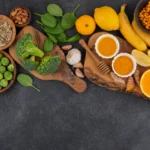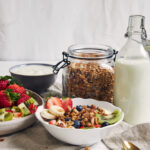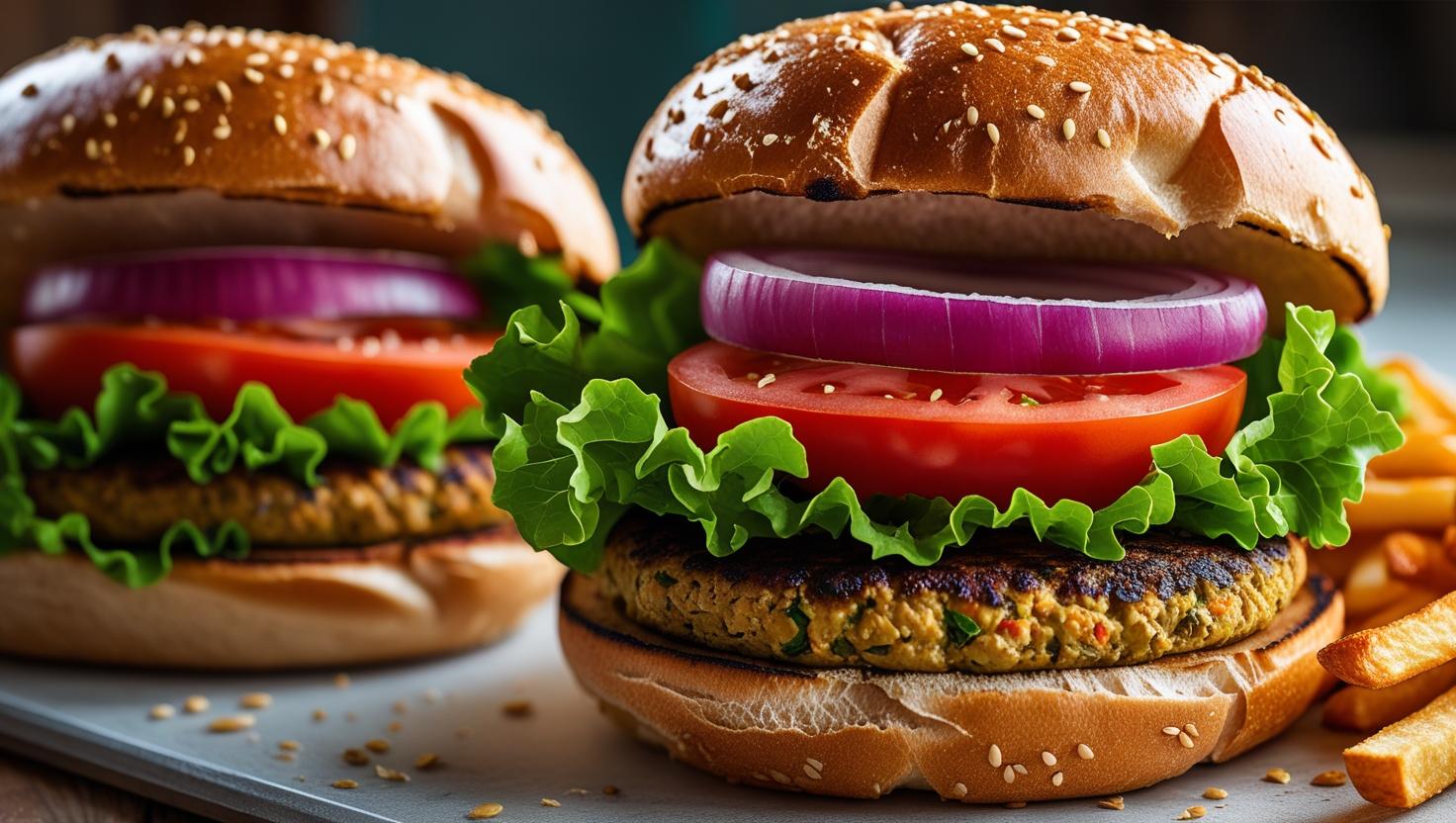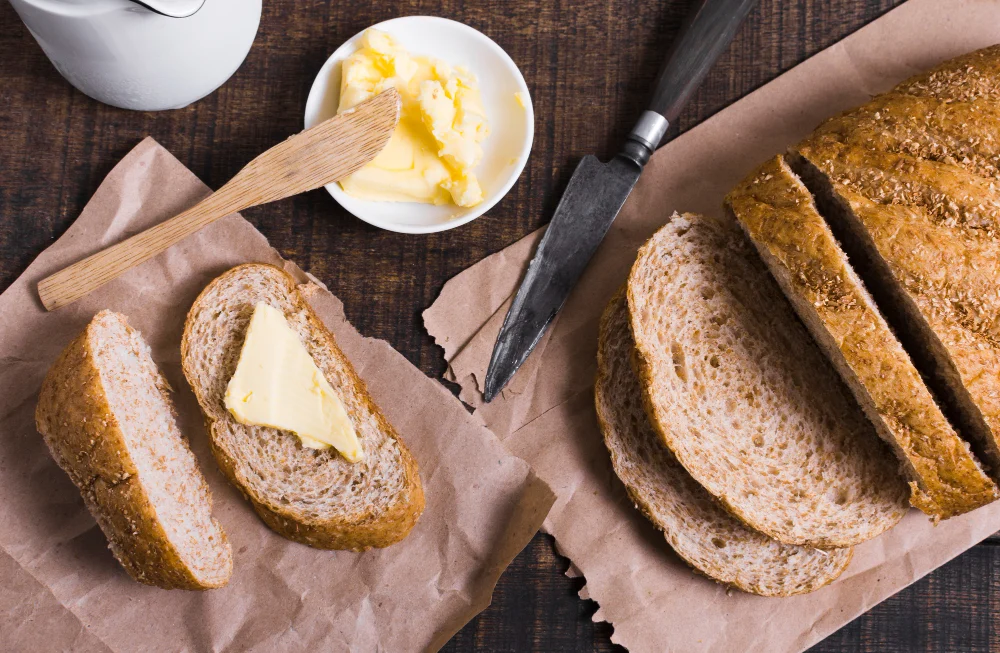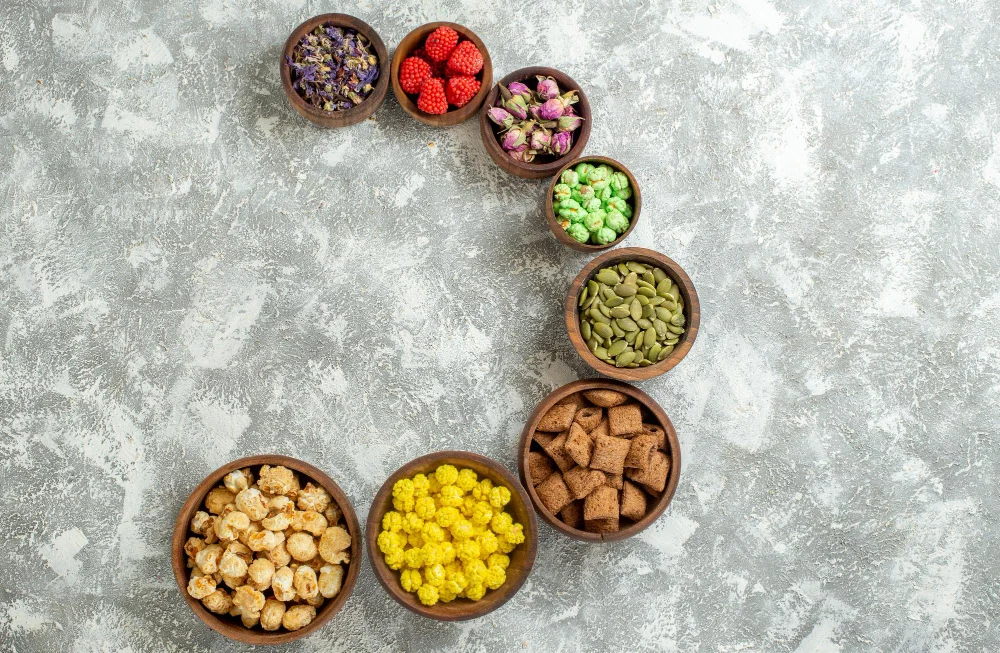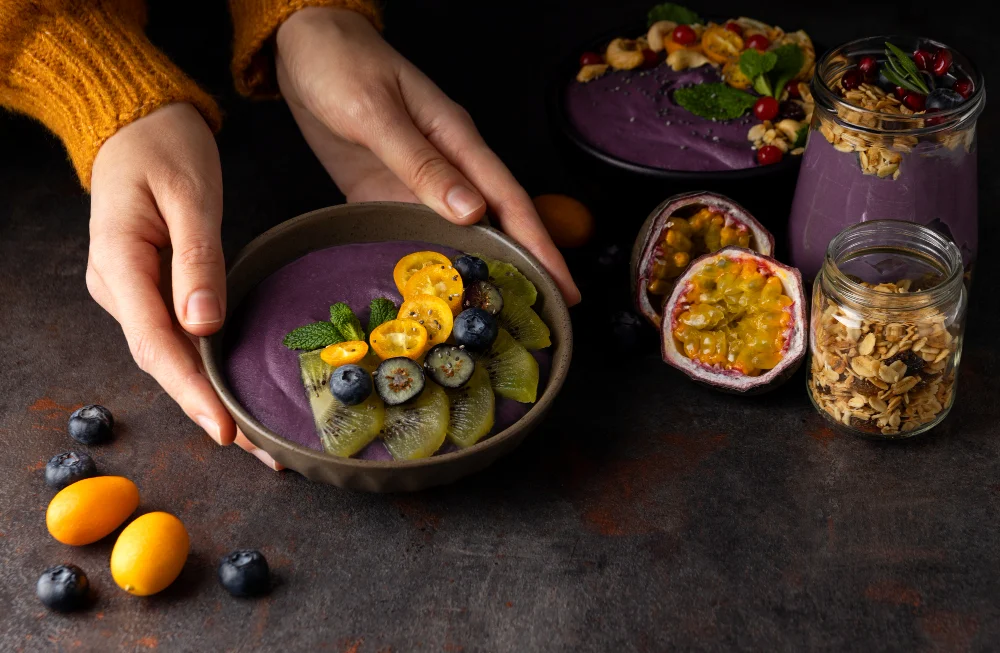The humble burger holds a special place in global cuisine, beloved for its satisfying heartiness. Thankfully, embracing a vegan lifestyle doesn’t mean giving up this iconic comfort food. While commercial vegan burgers are increasingly available, making delicious vegan burgers at home unlocks a world of flavour, customization, and satisfaction. It allows complete control over ingredients, nutrition, cost, and ethics. This guide provides a comprehensive exploration of crafting the perfect homemade vegan burger, delving into nutritional strategies, ethical considerations, sustainable ingredient choices, and the practical tips and techniques needed for success in any kitchen, including those here in Siyol, Rajasthan.
LENS 1: Nutritional Analysis (Building a Better Burger)

Homemade vegan burgers offer a fantastic opportunity to pack flavour and nutrition into a satisfying patty, often surpassing both meat burgers and commercial alternatives in healthfulness.
- The Building Blocks:
- Base (Protein & Fiber): Cooked legumes are the stars – black beans, kidney beans (rajma), chickpeas (chana), lentils (dal) provide protein, fiber, and a ‘meaty’ texture when mashed. Combining them adds complexity.
- Texture & Binding Grains: Cooked brown rice, quinoa, rolled oats (use certified gluten-free if needed), or even breadcrumbs (preferably whole wheat) help bind the patty and add texture.
- Vegetables (Flavor, Moisture, Nutrients): Finely chopped or grated onions, garlic, mushrooms (add umami depth), carrots, beets (for colour and sweetness), bell peppers, or spinach add flavour, moisture, and valuable vitamins/minerals.
- Binders (The Glue): Crucial for holding the patty together. Options include:
- Flax egg (1 tbsp ground flax + 3 tbsp water)
- Chia egg (1 tbsp chia seeds + 3 tbsp water)
- Mashed potato or sweet potato
- Tahini or nut/seed butter (also adds fat/flavour)
- Starches like cornstarch, tapioca starch, or gram flour (besan – common in India).
- Flavor Strategy: This is where homemade shines! Use generous amounts of spices (cumin/jeera, coriander/dhania powder, garam masala, chili powder, smoked paprika), dried herbs, fresh herbs (coriander/dhania, mint/pudina), nutritional yeast (‘cheesy’ umami), soy sauce/tamari, or even a dash of liquid smoke (optional).
- Fat for Mouthfeel: While aiming for less fat than many meat burgers, a little healthy fat improves texture and satisfaction. This can come from nuts/seeds mixed in, tahini/nut butter binders, or a small amount of oil used for sautéing vegetables or cooking the patty.
- Nutritional Advantages: Homemade burgers typically boast more fiber, less saturated fat, and zero cholesterol compared to beef burgers. You control the sodium content, often much lower than store-bought vegan or meat patties. They can be rich in iron, zinc, magnesium, and B vitamins (except B12 – supplement separately!). How can you boost the vegetable content and fiber in your favourite burger recipe?
Nutritional Deep Dive: The Role of Binders in Vegan Burgers
Binders are essential to prevent the dreaded ‘crumbly veggie burger’.
- Flax/Chia Eggs: When mixed with water, these seeds release mucilage, a gel-like substance that mimics egg’s binding properties. They also add fiber and omega-3s.
- Starches (Flour, Breadcrumbs, Cooked Grains, Potato/Sweet Potato): When heated during cooking, starches gelatinize, absorbing moisture and creating a network that helps hold the patty structure together. Whole grain options add more fiber.
- Nut/Seed Butters/Tahini: Provide moisture and fat, which helps bind ingredients together, but use moderately as they can make patties dense or heavy.
- Choosing the Right Binder: The best binder depends on the base ingredients and desired texture. Often, a combination (e.g., flax egg + breadcrumbs) works best
- Voice of Experience (Registered Dietitian): “Homemade vegan burgers are a fantastic opportunity to create a truly nutrient-dense meal. Focus on legume or lentil bases for protein and fiber, incorporate plenty of colourful vegetables, use whole grains for binding, and be generous with herbs and spices for flavour instead of excessive salt. It’s a delicious way to enjoy a classic comfort food healthily.” – Anita Verma, RDN
LENS 2: Ethical Framework (Conscious Creation)

Crafting your own vegan burgers from scratch offers ethical satisfaction beyond just avoiding animal products.
- Cruelty-Free Core: The most fundamental aspect – enjoying a hearty, satisfying burger knowing no animals were harmed in its creation.
- Ingredient Transparency & Control: Unlike complex ingredient lists on packaged goods, homemade means you know exactly what’s in your food. This allows for choosing ethically sourced ingredients – Fair Trade spices, locally grown vegetables from trusted vendors (like at the Siyol mandi), organic grains/beans if accessible and affordable.
- Reducing Corporate Reliance: Making food from scratch empowers individuals and reduces reliance on large corporations that dominate the processed food market (including some large vegan brands), supporting a more decentralized and potentially more ethical food system.
- Minimizing Waste: Homemade burgers drastically reduce packaging waste compared to store-bought patties (often individually wrapped in plastic). It also encourages using whole vegetables and potentially finding uses for scraps (e.g., veggie broth).
- Sharing Compassion: Offering delicious, homemade vegan burgers to friends and family is a tangible, enjoyable way to share your values and demonstrate that ethical eating is abundant and satisfying, not restrictive. What ethical consideration (animal welfare, sourcing, waste reduction) feels most significant when you cook from scratch?
Hidden Benefits: Deeper Food Connection
The process of selecting ingredients, preparing them, and forming the burgers fosters a deeper connection to and appreciation for your food, contrasting with the detachment often associated with purchasing pre-made items.
Voice of Experience (Ethical Food Advocate): “Making vegan burgers at home embodies conscious consumption. You choose the ingredients, support local farmers perhaps, avoid excessive packaging, and create something delicious entirely free from animal exploitation. It’s a small but powerful act of aligning your daily choices with your values.” – Sameer Khan, “Kind Kitchen” Initiative
Critical Reassessment: Acknowledging Constraints
While ideal, making everything from scratch requires time, energy, basic cooking skills, and access to ingredients, which aren’t available to everyone equally. A balanced ethical view acknowledges the value of homemade while accepting that convenient store-bought options play a role in making veganism accessible for many busy people.
LENS 3: Ingredient Science & Environment (Sustainable Patties)
Understanding basic food science helps create better burgers, while choosing plant-based ingredients drastically lowers the environmental impact.
- Texture Science:
- Binding: Achieved through starches gelatinizing (from grains, potato, flour) and/or proteins coagulating or gels forming (flax/chia mucilage). Moisture balance is key – too wet = mushy, too dry = crumbly. Chilling the mixture before forming/cooking helps ingredients bind.
- ‘Meaty’ Chew: Can come from ingredients like vital wheat gluten (if making seitan-based burgers), properly cooked lentils, textured vegetable protein mixed in, or larger pieces of mushrooms.
- Browning (Maillard Reaction): Achieved through cooking (pan-frying, baking at higher heat, grilling). Sugars and amino acids react under heat, creating desirable colour and savoury flavour compounds. Adding a touch of sweetness (e.g., molasses, ketchup) can enhance this.
- Environmental Superiority: Homemade vegan burgers, typically based on legumes, grains, and vegetables, have a significantly lower environmental footprint than beef burgers:
- Land Use: Require vastly less land.
- Water Consumption: Water footprint is dramatically lower (especially compared to beef).
- Greenhouse Gas Emissions: Generate far fewer emissions (no methane from livestock digestion, less transport/processing energy compared to meat).
- Ingredient Choice Matters: Favoring pulses (lentils, beans), local grains (like bajra potentially used as a binder/in buns in Rajasthan), and seasonal vegetables minimizes impact further compared to relying on imported nuts or out-of-season produce. Even compared to some heavily processed commercial vegan burgers requiring significant energy for protein isolation and extrusion, simple homemade versions often have an edge. How does the significantly lower environmental impact influence your choice to make vegan burgers at home?
Market Transformation Map Suggestion: Data showing increasing sales of dried legumes and bulk grains alongside increased interest (search trends) in “homemade veggie burger recipes,” suggesting a shift towards from-scratch cooking.
Voice of Experience (Food Scientist): “Creating a great vegan burger is about managing moisture and binding. Mashing some beans while leaving others whole creates texture variation. Binders like flaxseed gel or breadcrumbs absorb excess moisture and hold the patty together during cooking. Getting a good sear develops those crucial Maillard reaction flavours.” – Dr. Aisha Khan, Plant-Based Food Development
LENS 4: Everyday Practitioner’s Experience (Techniques & Recipes)

This is the hands-on guide to crafting burger perfection at home.
Core Techniques:
- Prepare Your Base: Cook legumes/grains thoroughly. Drain beans/lentils very well.
- Sauté Aromatics: Cook finely chopped onions, garlic, and other vegetables (mushrooms, carrots) until softened – develops flavour.
- Mash (But Not Too Much): Mash about half to two-thirds of your beans/lentils for binding, leaving some whole for texture. Use a potato masher or fork.
- Combine & Flavour: Mix mashed and whole base ingredients, cooked grains, sautéed vegetables, binders (prepared flax/chia egg, breadcrumbs, etc.), spices, herbs, and any other flavourings. Mix well but gently.
- Check Consistency: The mixture should hold together when squeezed but not be overly wet or sticky. If too wet, add more breadcrumbs/oats/flour gradually. If too dry, add a splash of water/broth or a little sauce (ketchup/tahini).
- Chill the Mixture: Crucial step! Refrigerate the mixture for at least 30 minutes (or longer). This helps it firm up and makes patties easier to form and less likely to fall apart during cooking.
- Form Patties: Shape into evenly sized patties with slightly damp hands. Don’t make them too thick, as they might not cook through evenly.
- Cook:
- Pan-Frying: Heat oil in a skillet over medium heat. Cook patties for 4-7 minutes per side, until nicely browned and heated through.
- Baking: Place on a lightly oiled baking sheet. Bake at around 200°C (400°F) for 20-30 minutes, flipping halfway, until firm and browned.
- Grilling: Best for firmer patties. Oil the grill grates well. Grill for 4-6 minutes per side.
Recipe Ideas (Adaptable):
- Classic Black Bean Burger: Mashed black beans, cooked brown rice or oats, sautéed onion/garlic/bell pepper, breadcrumbs, flax egg, cumin, chili powder, smoked paprika.
- Spiced Lentil & Walnut Burger (Indian Flavours): Cooked masoor or green lentils, finely chopped walnuts (or peanuts for budget option), sautéed onion/ginger/garlic, breadcrumbs/besan, garam masala, coriander powder, turmeric, fresh coriander, chili.
- Chickpea & Sweet Potato Burger: Mashed chickpeas (chana), mashed roasted sweet potato, rolled oats, sautéed onion, cumin, coriander, maybe some chaat masala, flax egg.
- Aloo Tikki Burger (Indian Fusion): Mashed boiled potatoes mixed with peas, onions, ginger, green chilies, coriander, breadcrumbs/cornflour for binding, spices (cumin, coriander, amchur/mango powder). Pan-fry until crisp. Serve on a bun with mint chutney and tamarind sauce instead of ketchup/mayo.
Essential Toppings & Buns:
- Buns: Check ingredients for dairy/eggs/honey if buying. Whole wheat, multigrain, or even local pav buns work. Lightly toast them!
- Sauces: Vegan mayo, ketchup, mustard, chili sauce, BBQ sauce, guacamole, hummus, Indian chutneys (mint-coriander, tamarind).
- Veggies: Lettuce, tomato slices, onion rings (raw or caramelized), pickles (achar), roasted peppers.
- Extras: Vegan cheese slices, sautéed mushrooms, avocado slices.
What is your biggest challenge when making vegan burgers at home (texture, flavour, falling apart)?
Daily Impact: Burger Prep Power
Make a double batch of burger mixture. Form all patties. Cook what you need and freeze the rest (uncooked) between layers of parchment paper in an airtight container for quick future meals.
Voice of Experience (Home Cook, India): “Making aloo tikki burgers at home is so easy and satisfying! The key is getting the potato mixture right – not too wet – and using breadcrumbs to get a nice crispy coating when pan-fried. Served on a simple bun with imli (tamarind) and dhaniya (coriander) chutney… it’s the best budget comfort food!” – Mrs. Sharma, Siyol Resident (hypothetical)

Alternative Approaches: Grain-Free or Minimalist
Explore recipes using primarily vegetables and nuts/seeds (grain-free), or focus on very simple formulas with just beans, binder, and basic spices for quick preparation.
PERSPECTIVE INTERSECTION MATRIX
- Nutrition & Technique (Lens 1 & 4): Choosing binders or bases (Lens 4) impacts the final nutritional profile (fiber, protein, fat) (Lens 1). Cooking method (baking vs. frying) also affects nutrition (Lens 1).
- Ethics & Homemade (Lens 2 & 4): The ethical satisfaction of control and waste reduction (Lens 2) is realized through the practical act of cooking from scratch (Lens 4).
- Environment & Ingredients (Lens 3 & 4): Selecting low-impact, seasonal ingredients (Lens 3) is put into practice when shopping and preparing homemade burgers (Lens 4).
- Science & Troubleshooting (Lens 3 & 4): Understanding why burgers fall apart (binding science) (Lens 3) helps practitioners adjust moisture or binders (Lens 4) to fix the problem.
- Taste & All Perspectives (Lens 4 & 1/2/3): The final delicious result (Lens 4) comes from balancing flavour science (Lens 3), nutritious ingredients (Lens 1), and perhaps even the mindful, ethical approach to its creation (Lens 2).
MISCONCEPTION ANALYSIS
| Misconception | Reality |
| Homemade vegan burgers inevitably crumble and fall apart during cooking. | This common issue is easily solved with proper binding agents (flax/chia eggs, breadcrumbs, oats, potato), correct moisture balance (not too wet!), and chilling the mixture before forming and cooking. Technique matters! |
| Vegan burgers made from beans or lentils are bland and mushy. | Flavour comes from generous use of spices, herbs, sautéed aromatics, sauces, and achieving a good sear during cooking. Texture variation is achieved by not over-mashing the base and adding ingredients like grains, nuts, or seeds. |
| Making vegan burgers from scratch is too complicated and takes too long. | Many recipes are straightforward: mash, mix, chill, form, cook. While chilling takes time, active prep can be quick (20-30 mins). Batch cooking the patties saves significant time later. |
| You need specialty ingredients like methylcellulose for good homemade burgers. | While commercial producers use such binders, excellent homemade burgers rely on common pantry staples like breadcrumbs, oats, flour, flax seeds, chia seeds, or potato/sweet potato for binding. |
| Homemade vegan burgers aren’t ‘proper’ burgers. | A burger is defined by its format (patty in a bun) and satisfying nature. Delicious, well-textured homemade vegan burgers absolutely qualify and offer endless flavour possibilities. |
KEY TURNING POINTS
- Counter-Culture & Health Food Movements (1960s-70s): Initial popularization of basic “veggie burgers” often made from grains and vegetables.
- Rise of Food Blogs & Online Recipe Sharing: Exploded the creativity and accessibility of diverse homemade vegan burger recipes using various bases and binders.
- Mainstream Awareness of Binders: Wider understanding and availability of effective vegan binders like flax seeds and chia seeds.
- “Whole Foods” Movement: Increased interest in cooking from scratch with unprocessed ingredients, boosting homemade burger appeal.
- Social Media Food Photography: Platforms like Instagram and Pinterest showcased visually stunning homemade vegan burgers, inspiring emulation.
SYNTHESIS & RECOMMENDATIONS
Crafting delicious vegan burgers at home is a deeply rewarding experience, offering unparalleled control over flavour, texture, nutrition, cost, and ethical considerations. Far from being difficult or bland, homemade vegan burgers can be incredibly diverse, satisfying, and packed with nourishment when you understand the basic principles. By choosing a hearty base, incorporating effective binders, layering flavours with spices and aromatics, and mastering simple cooking techniques, you can easily create plant-powered patties that rival any store-bought or restaurant offering. Embrace the process, customize to your taste (perhaps with local Indian flavours!), and enjoy the wholesome satisfaction of a truly homemade burger.
Recommendations for Homemade Vegan Burger Success:
- Choose Your Base Wisely: Start with well-cooked, well-drained legumes (beans, lentils, chickpeas).
- Don’t Skip the Binder: Use flax/chia eggs, breadcrumbs, oats, or mashed starchy vegetables for structure.
- Flavour Generously: Utilize sautéed onions/garlic, spices, herbs, nutritional yeast, and sauces – taste and adjust!
- Control Moisture: Aim for a mixture that holds together but isn’t wet or sticky. Adjust with binders (if too wet) or a splash of liquid (if too dry).
- CHILL THE MIXTURE: This is crucial! Refrigerate for at least 30 minutes before forming patties.
- Form Even Patties: Don’t make them too thick for even cooking.
- Cook Correctly: Pan-fry for a good crust, bake for lower fat, or grill firmer patties carefully. Don’t undercook.
- Build a Great Burger: Use toasted buns and your favourite vegan toppings and sauces to complete the experience.
FURTHER AREAS OF EXPLORATION
- Top 5 Bean Burger Recipes (Different Bean Bases)
- Guide to Vegan Binders: What Works Best When?
- Creative Flavor Combinations for Homemade Vegan Burgers
- Making Vegan Burger Buns from Scratch
- How to Grill Vegan Burgers Without Them Sticking or Falling Apart
- Gluten-Free and Nut-Free Vegan Burger Options
- Using Indian Spices and Chutneys for Unique Burger Flavours




